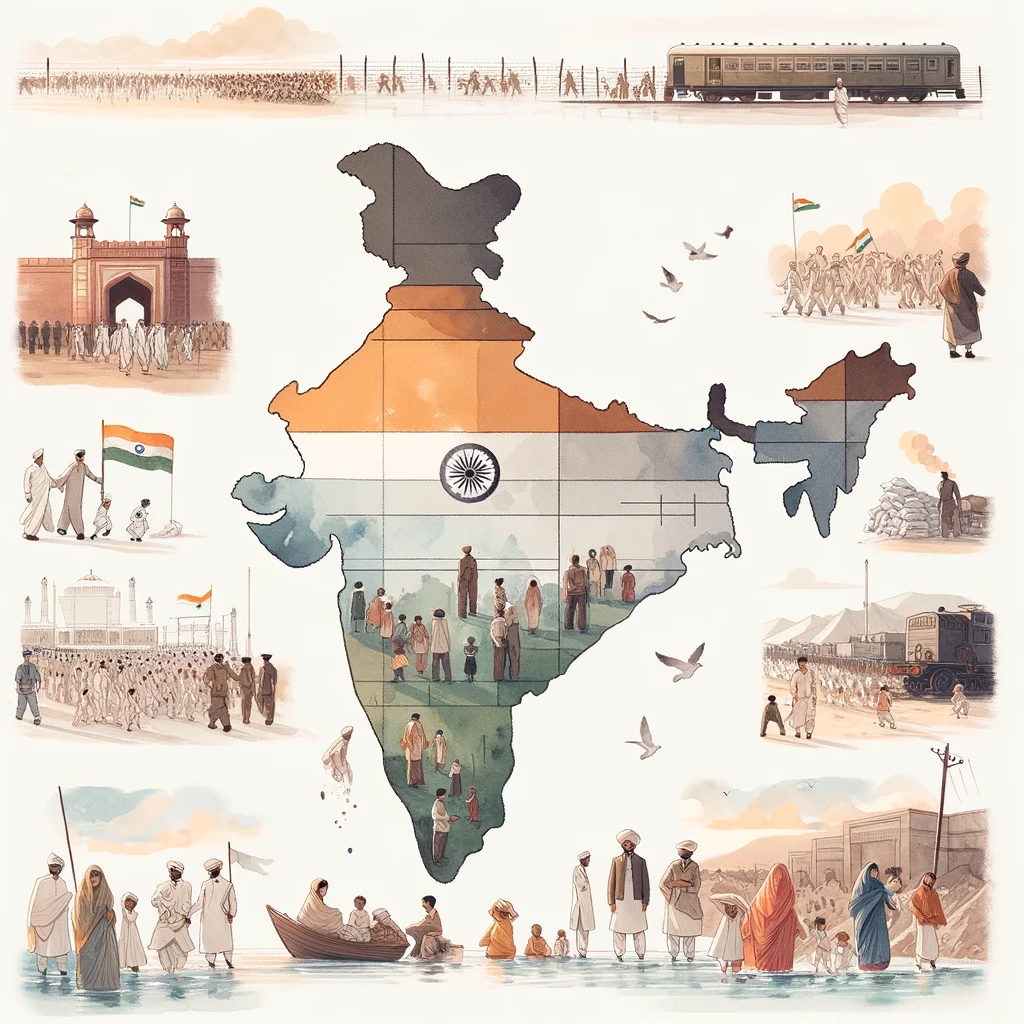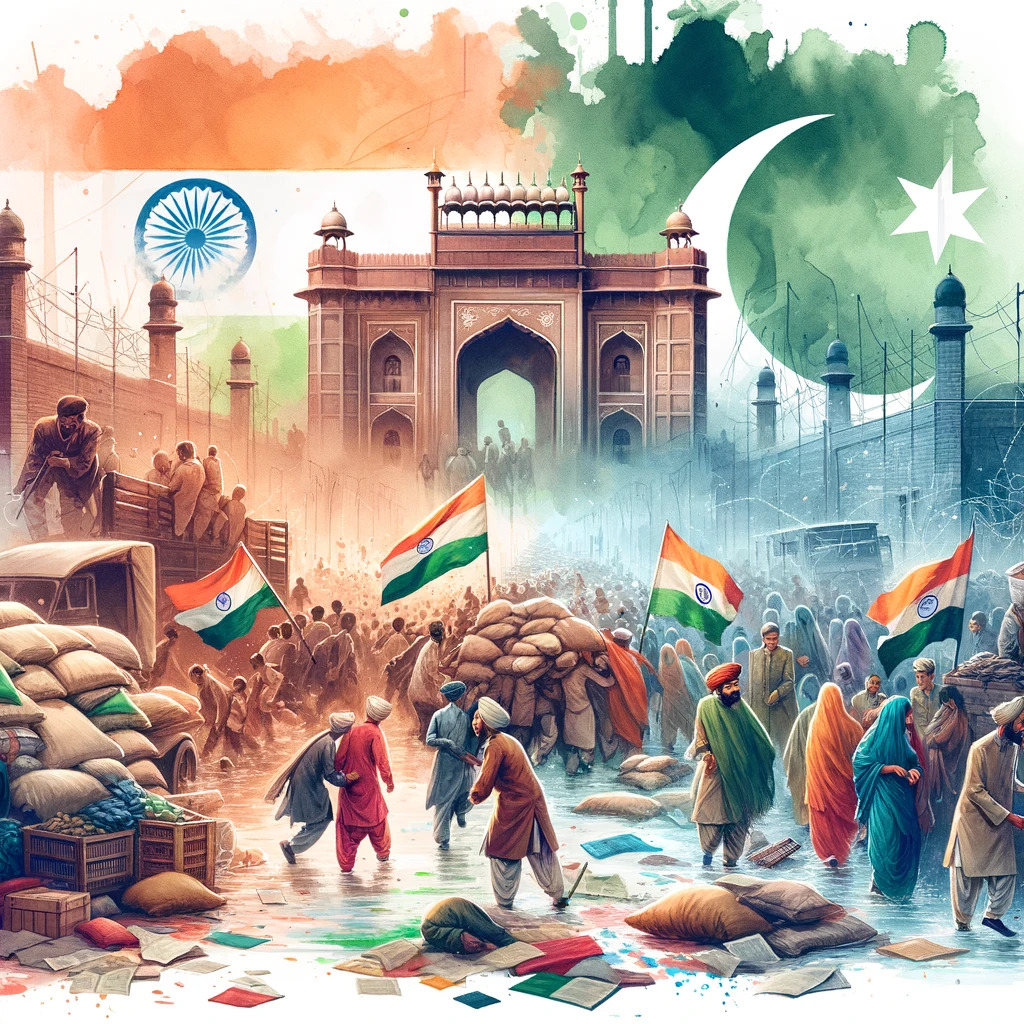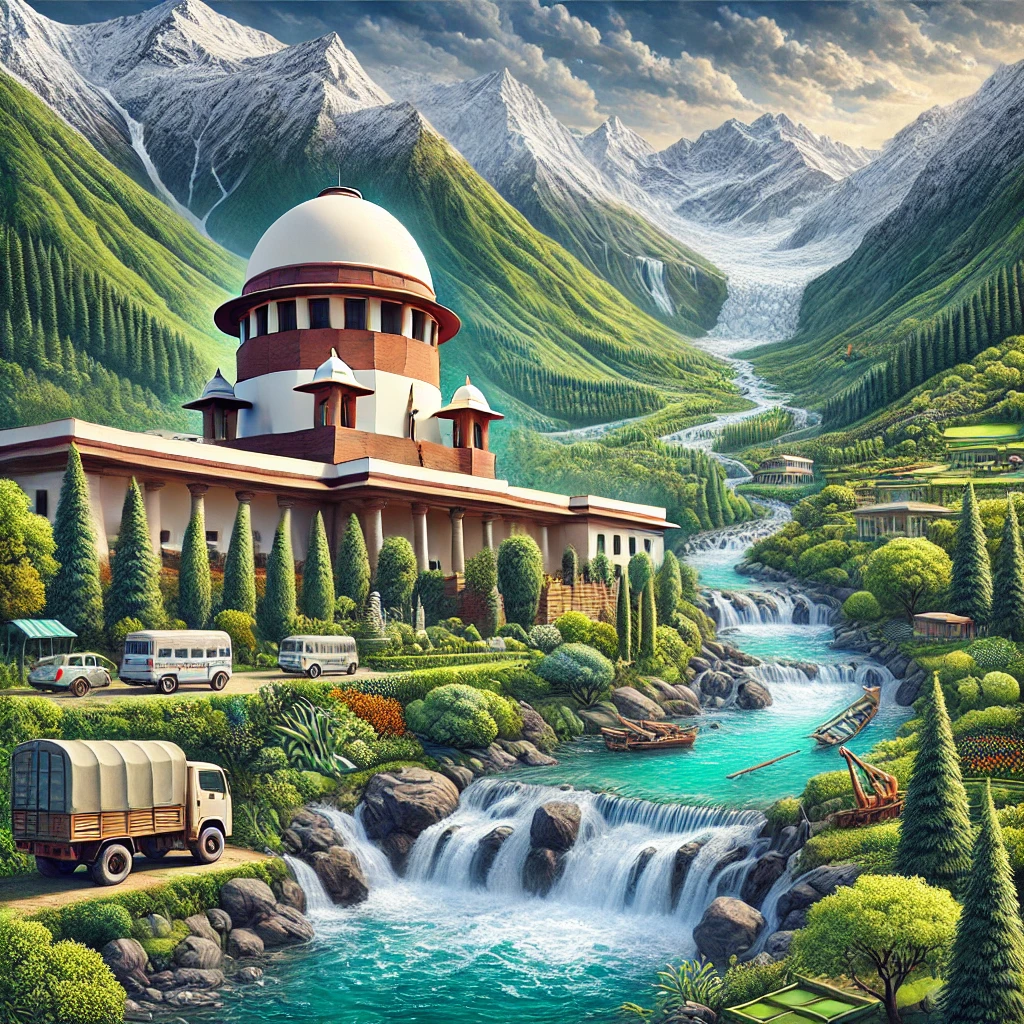The partition of India in 1947 was a pivotal event in the subcontinent’s history, leading to the creation of two independent nations, India and Pakistan. This monumental event was accompanied by widespread communal violence, massive migrations, and a significant refugee crisis. Understanding the events leading to the partition, the delineation of the Radcliffe Line, and the aftermath is crucial for comprehending the historical context of modern South Asia.

Events Leading to the Partition of India
Demand for Pakistan
- The demand for a separate Muslim state, Pakistan, was formally articulated by the All-India Muslim League under the leadership of Muhammad Ali Jinnah. The League’s Lahore Resolution in 1940 called for “independent states” in Muslim-majority areas.
- Jinnah argued that Muslims were a distinct nation and required their homeland to protect their rights and interests.
Communal Tensions and Political Developments
- Communal tensions between Hindus and Muslims had been escalating throughout the 1930s and 1940s, fueled by political rivalries and divergent aspirations.
- The failure of the Cripps Mission in 1942 and the breakdown of the Cabinet Mission Plan in 1946 deepened the divide. The latter’s proposal for a decentralized India with significant provincial autonomy failed to satisfy both the Congress and the Muslim League.
Direct Action Day
On August 16, 1946, the Muslim League called for Direct Action Day to demand the creation of Pakistan. The day witnessed severe communal riots in Calcutta (now Kolkata), resulting in thousands of deaths and worsening Hindu-Muslim relations.
Mountbatten Plan
- Lord Louis Mountbatten, the last Viceroy of India, proposed a plan to partition India into two independent dominions. Both the Congress and the Muslim League reluctantly accepted the plan as the only feasible solution to avoid a civil war.
- The plan was announced on June 3, 1947, and it was decided that India would gain independence on August 15, 1947, with Pakistan being created a day earlier.
Radcliffe Line and Mass Migrations
Radcliffe Line
- The boundary demarcation between India and Pakistan was entrusted to a British lawyer, Sir Cyril Radcliffe. Despite having no prior knowledge of Indian geography and politics, Radcliffe was tasked with drawing the boundary within five weeks.
- The Radcliffe Line, announced on August 17, 1947, divided the provinces of Bengal and Punjab based on religious majorities. The line led to the creation of West Pakistan (now Pakistan) and East Pakistan (now Bangladesh) alongside India.
Mass Migrations
- The partition triggered one of the largest mass migrations in human history. Approximately 14–16 million people crossed the newly drawn borders to join their chosen dominion.
- Hindus and Sikhs moved from Pakistan to India, while Muslims moved from India to Pakistan. This mass exodus was marked by chaos, violence, and immense suffering.
Communal Violence
- The announcement of partition and the ensuing migrations were accompanied by widespread communal violence. Hindus, Muslims, and Sikhs engaged in brutal clashes, leading to large-scale massacres, arson, and looting.
- Cities like Lahore, Amritsar, and Delhi witnessed horrific communal riots. Entire villages were wiped out, and millions were killed or injured in the ensuing chaos.
Refugee Crisis
- The mass migrations created a colossal refugee crisis. Millions of people were uprooted from their homes, leaving behind their possessions and livelihoods. Refugee camps sprung up across India and Pakistan, struggling to provide necessities to the displaced populations.
- The governments of both India and Pakistan were overwhelmed by the sheer scale of the crisis. Efforts were made to provide relief and rehabilitation, but the process was fraught with challenges.
Long-term Impact
- The partition left deep scars on the psyche of the people. Families were divided, and the trauma of violence and displacement lingered for generations.
- The communal animosity and distrust sown during the partition continued to affect India-Pakistan relations, leading to conflicts and wars in subsequent decades.
- The refugee crisis also reshaped the demographics and socio-economic conditions in many regions, influencing political dynamics in both countries.
Conclusion
The partition of India in 1947 was a defining moment in the subcontinent’s history, leading to the birth of two independent nations but at a tremendous human cost. The events leading to the partition, the drawing of the Radcliffe Line, and the resultant mass migrations and communal violence left an indelible mark on South Asia. Understanding this period is crucial for comprehending the complex historical, social, and political context of modern India and Pakistan. The legacy of partition continues to influence the region’s geopolitics and inter-community relations to this day.


